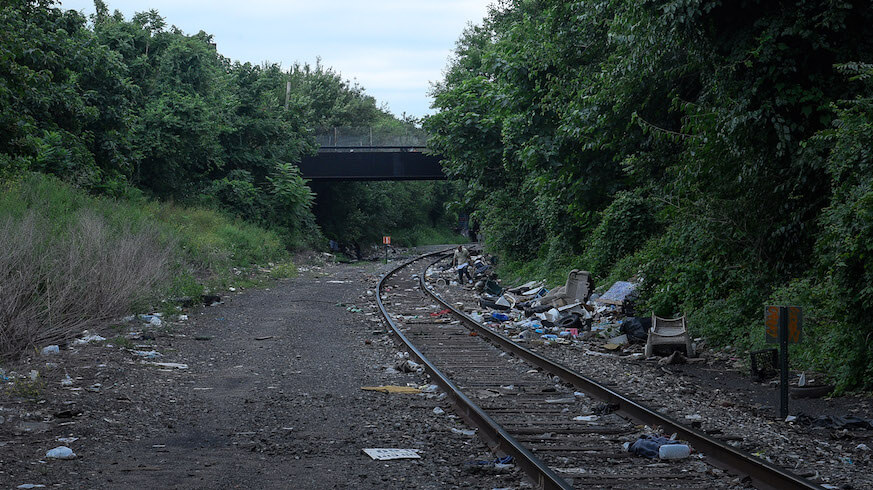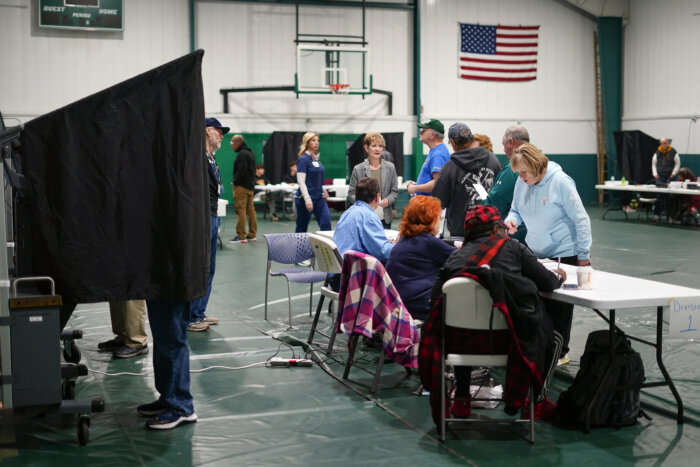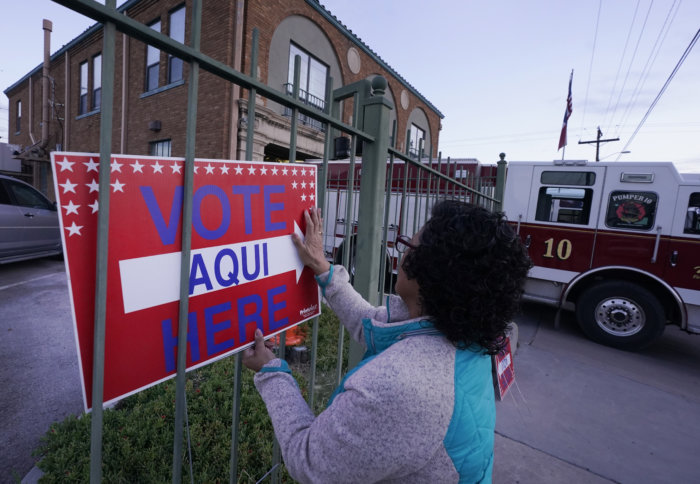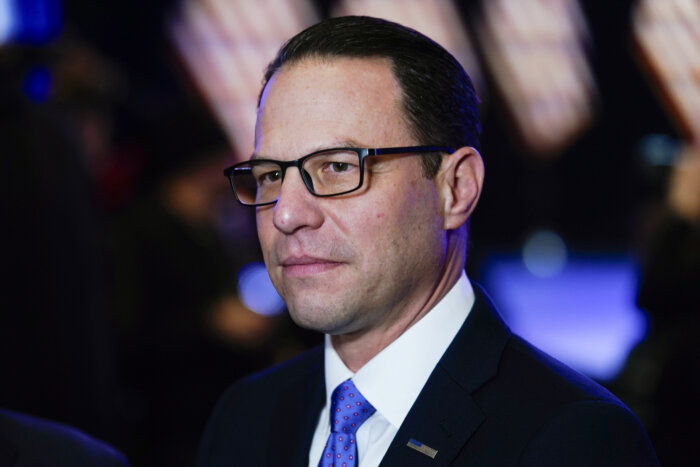On Monday morning, crews armed with construction equipment began what could be a monthlong process of cleaning out a mile-long stretch of Conrail track in Kensington that has earned the dubious moniker of a “heroin hellscape” due to the sheer amount of drug use that can be seen in the area on a daily basis.
The area has long been a problem, so much so that TV’s Dr. Oz even came to film the area for a segment on the strip back in April.
Now, the city has partnered with Conrail to clean and green the area, removing vegetation along each side of a mile of tracks, cleaning out tons of illegally dumped trash and, hopefully, moving out users and helping them get the help they need.
“There is a lot of short dumping that happens back along the property, and that’s a major, major problem for us,” said Jocelyn Hill, director of public relations for Conrail, as she stepped through the high weeds along the tracks on Monday morning.
However, cleaning this stretch of tracks is nothing new. In fact, Conrail just did a major cleanup of the area two years ago, but, locals said, within weeks, the drug problem was back in full force throughout the region.
But, this time could be different, as Conrail and the city are partnering with community groups and outreach efforts to connect users in the area to treatment programs and to help keep the area free from trespassers and short dumpers in the future.
Tents set up to help users leaving ‘El Campanado’ find rehabilitation services and get them food pic.twitter.com/LpYzzXUmir
— Hayden Mitman (@HaydenMitman) July 31, 2017
According to Hill, about five years ago, Conrail committed a portion of the land along this strip to the New Kensington Community Development Corporation, to tie into an $18 million low-income housing development that the corporation currently has under construction. Through that agreement, new fencing has been placed along the rails and, Hill said, the area has been kept free from trespassers.
“They have taken the hill and made it nice. It’s been five years,” she said.
Next, she said, Conrail is working with the community groups Impact and the Hispanic Association of Contractors and Enterprises to help protect more parts of the strip. Also, according to Michael DiBeradinis, Philadelphia’s managing director, the city has installed $90,000 worth of fencing along seven overpasses in an effort to stop trespassing and short dumping.
“We are eliminating the situations that brought drug users in,” he said. “We aren’t going to solve the problem overnight, be we are here for the long haul.”
On Monday, crews were working to clear a staging area at Trenton and Lehigh avenues. According to Beverly Woods, of the Managing Director’s Office, crews haven’t yet cleared out the “shooting galleries” – areas known for heavy traffic from users and sellers of heroin – but most users, she said, have already moved on as cleanups started.
“There aren’t a ton of permanent residents on these tracks,” she said. “There are some, but most have moved on.”
As users move out of the area, the city has services available to help them fight drug addiction, and beds are available throughout the city in shelters for them. As of noon on Monday, DiBeradinis said as many as 15 heroin users had taken advantage of the services set up at Second Street and Indiana Avenue.
These shelters will be there for the next few days, and David T. Jones, head of the city’s Department of Behavioral Health and Intellectual Disability Services, said teams will continue to work in the community throughout the cleanup effort.
In applauding the ongoing cleanup effort, City Councilwoman Maria Quiñones-Sánchez (D-7th Dist.), whose district the cleanup encompasses, said she believed this new effort would make a real impact on the problem area for her constituents, because she saw an outpouring of support from so many partnering organizations.
“What you see here is the most coordinated effort we’ve ever had,” she said.
































